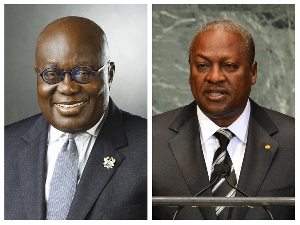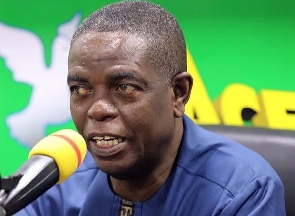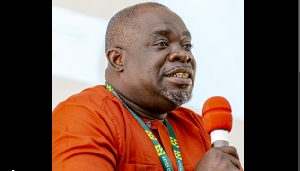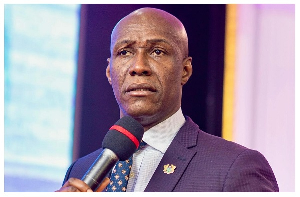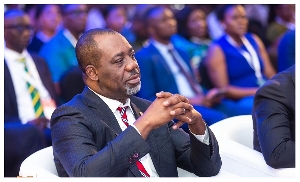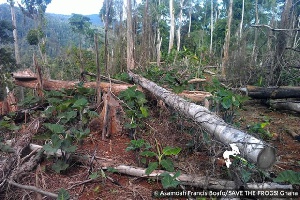 Section of Sui river forest reserve converted into farmland.
Section of Sui river forest reserve converted into farmland.
Africa's rainforests are classified as part of the most important biodiversity areas in the world
But these forests are under severe threats from increasing population through logging, forest fragmentation, forest conversion into plantations, and mining activities.
Africa’s forest cover loss has been estimated at about 53 million hectares, accounting for about 56% of the global forest loss, with biodiversity decrease in these areas. Every second, 1 hectare (2.4 acres) of rainforest is destroyed. Along with forest loss comes species extinction.
A Renowned Harvard University entomologist and ecologist E.O. Wilson estimates that 137 life forms from microorganisms to insects to mammals are driven to extinction each year (1992 estimate). Nearly half of all life forms on the planet live in tropical rainforests.
Forest degradation and loss of biodiversity is happening in Ghana. To halt this development, we need to raise public awareness to legitimize new policies and practices. Considering the Sustainable Development Goals that Ghana has committed itself to, Goal number 15 – life on land – requires a paradigm shift for how we treat our forests and biodiversity.
The Ghana Environmental Concern Meter (GECM), an annual public perception report on environmental protection performance in Ghana by the Centre for Environmental Research and Policy Analysis (CERPA) stated that forest degradation and land degradation are part of the four most significant environmental problems in the Ghanaian society.
An estimated 70% of Ghana’s forest has been destroyed with deforestation being the principal cause.
The increased rate of deforestation has led to fragments of secondary forests, environmental degradation and loss of biological diversity. On the 11th and 14th of June 2017 alone, an estimated $1.2 million illegal shipment of scales from the world most illegally traded mammal (pangolin) were uncovered in Malaysia with both shipments coming from Ghana.
An initial survey by A Rocha Ghana revealed that the local people whose activities directly affect the existence of species of conservation concern have less information on their identification and importance, they therefore tend to harvest species without knowledge of the consequences.
Rising public awareness is critical to curb this development
It is well recognized that communication, public awareness campaigns as well as education, play an important role in biodiversity conservation and other important environmental issues.
It is now widely recognized that spreading information to and enhancing the knowledge of rural communities is essential for the sustainable management of natural resources.
Conservation projects employs a variety of techniques such as posters, flipcharts, newsletters, community gatherings and radio plugs to raise public awareness, change attitudes, and influence behavior, yet the erosion of biological and cultural diversity continues to accelerate due to anthropogenic factors.
Sutherland and Steward two ecological and social researchers stated that communication, education, and public awareness campaigns can be significantly improved if experiences would be more thoroughly documented, compared, and substantiated with scientific evidence.
This is particularly relevant in developing countries, such as Ghana where financial resources for conservation are scarce, governments naturally have inadequate capacity to enforce environmental legislation, and rural communities often regard restrictions on resource use as arbitrary and unlawful.
Within the communication fields, documentary photography, which bears witness to social issues, has proven its ability to generate public awareness and inspire change. But unlike social documentary photography, modern nature photography is less commonly used to address conservation issues.
Prof. S.K. Jacobson in 2007, stated that promoting conservation through the use of arts may reach a more diverse audience and reach them more successfully by engaging their hearts as well as minds.
Willie Steenkampf (A South African independent film-maker) believes that multimedia approaches that adopt a positive rather than a negative issue driven approach engage audiences more directly. They tend to lead to higher audience loyalty and can make a significant contribution to environmental management. Nothing does more to inspire people to protect and conserve nature like a vivid photo image (R. Mittermeier 2006).
As Ghanaians we have committed ourselves to meet the SDGs, let us take the steps needed to halt biodiversity loss, and restore our forests through awareness building and communication that will lead into action.


